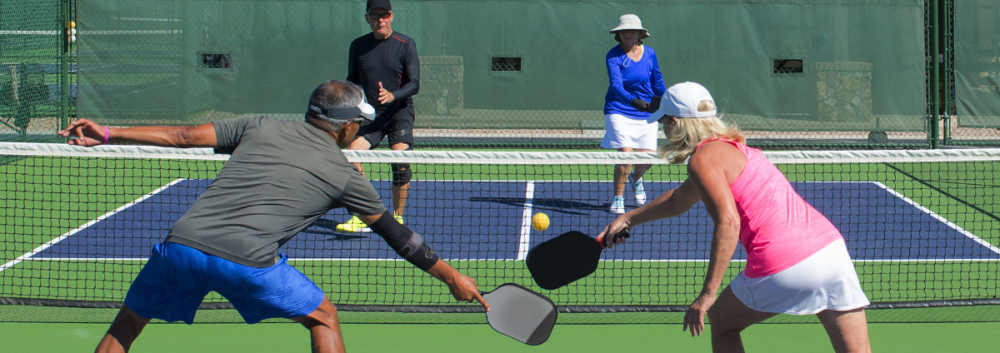The recommended strategy for the serving side is the 3rd shot drop. The advantage is normally with the receiving side. The receiver’s partner is already up at the kitchen. The receiver returns the serve deep into their opponents’ court where they both have to be back behind the service line to allow for the second bounce. By now the service receiver has joined their partner at the kitchen and are all set to dominate the ensuing rally. To neutralise this the serving side will play a drop shot into the kitchen which cannot be attacked and so can move up the court to their kitchen. The rally is neutralised, all four are at the net and typically a dinking rally will begin. That’s the theory.
But, the 3rd shot drop is notoriously difficult to pull off safely for many, probably most, players. It’s either into the net or too high and can be attacked. An alternative to the 3rd shot drop is to drive it hard and flat and rush the net, the so-called shake and bake strategy. The serving side have to agree to do this. Whoever the ball is returned to, they will drive it back. As soon as one of the serving side sees that it is their partner who will be playing the return of serve, they rush the net to attack any weak pop up return.
Phil and I tried this a couple of weeks ago and it worked well (some of the time). It was rather satisfying! It works particularly against players who don’t have very fast hands or, having returned the serve, are slow getting to the kitchen. It’s an obvious tactic to try against relatively inexperienced players but is becoming increasingly popular at the expert and pro level.
One word of warning though. It doesn’t remove the necessity to be able to do long range drops. If the shake and bake doesn’t win the point immediately the serving side often has to play a 5th shot drop and a dinking rally may still start. However, the 5th shot drop is likely to be played from mid court, a lot easier than playing the 3rd shot drop from behind the service line. The other thing to be wary of is that the 3rd shot drive has a high risk of hitting the net or going out.
It’s worth a try and, in practice it’s what a lot of intermediate players do anyway because the 3rd shot drop is so difficult and easily punished if they get it wrong. If you do try shake and bake don’t forget it’s not just a matter of driving the 3rd shot. One of you has to rush the kitchen immediately the low hard return is played by their partner and the other must join them there as soon as the drive is completed. If you don’t both get to the kitchen the chances are you will continue to be pinned to the the back leaving spaces all over the court for you opponents to hit into.
